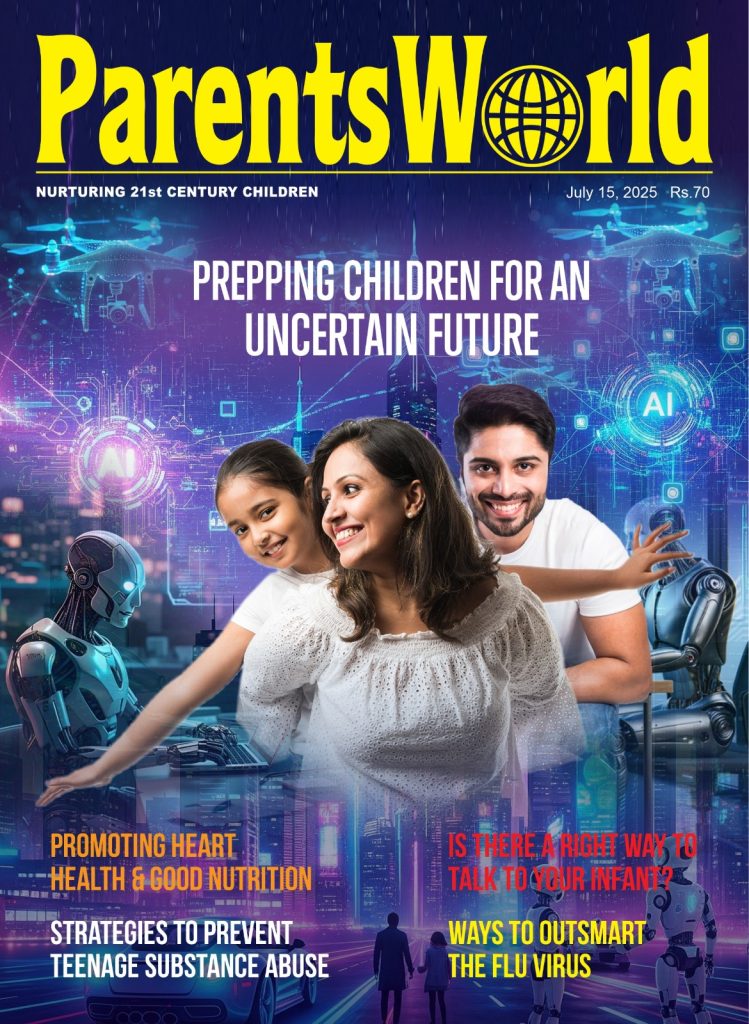Finding the Right Balance in Education: A Holistic Approach to Student Success
– Ananya Pande, PGT Commerce, Ecole Globale International Girls’ School
 In today’s fast-paced educational landscape, the pressure on students to succeed is higher than ever. From standardised testing to extracurricular activities, academic achievements often dominate the conversation about a student’s worth and potential.
In today’s fast-paced educational landscape, the pressure on students to succeed is higher than ever. From standardised testing to extracurricular activities, academic achievements often dominate the conversation about a student’s worth and potential.
However, a narrow focus on academic performance alone can lead to burnout, stress, and emotional exhaustion, leaving students feeling overwhelmed and disconnected from the joy of learning. The challenge, then, is finding the right balance one that prioritises academic excellence without sacrificing students’ mental health, personal development, or wellbeing.
In an ideal educational environment, students should be encouraged to excel intellectually, but also supported emotionally and socially to develop the skills they need to thrive in life beyond the classroom. Achieving this balance requires a shift in how we define success, how we measure progress, and how we foster an environment that nurtures the whole child.
The Importance of Emotional Wellbeing
Emotional health is a crucial part of a student’s overall development. A student’s ability to handle stress, manage emotions, and navigate relationships can profoundly affect their academic performance and personal happiness. When mental health struggles such as anxiety, depression, or feelings of inadequacy are left unaddressed, they can hinder learning and limit a student’s potential.
Creating an environment where emotional wellbeing is prioritised alongside academic achievement is not only beneficial for students’ mental health but also for their long-term success. Research has shown that students who feel emotionally supported and safe are more likely to engage in their studies, take risks in their learning, and develop a love for learning that extends beyond grades and tests.
 Encouraging students to explore subjects they are passionate about, develop critical thinking skills, and engage in creative projects can help them see learning as a lifelong pursuit, not just a means to an end. Extracurricular activities whether sports, the arts, or volunteering also play a key role in this balance.
Encouraging students to explore subjects they are passionate about, develop critical thinking skills, and engage in creative projects can help them see learning as a lifelong pursuit, not just a means to an end. Extracurricular activities whether sports, the arts, or volunteering also play a key role in this balance.
These activities offer students an outlet for creativity and self-expression, provide opportunities for social connection, and allow them to build leadership and collaboration skills. They give students the chance to explore their interests, build confidence, and develop skills that will serve them well in both personal and professional contexts.
Moreover, the pursuit of personal growth through hobbies, interests, and self-exploration helps students develop a sense of identity and self-worth that isn’t based solely on academic achievements. Schools that encourage students to pursue passions outside the classroom give them the opportunity to grow into well-rounded individuals with a deep sense of self and an understanding of their place in the world.
The Role of Educators in Creating Balance
Teachers have a pivotal role to play in creating a balanced approach to education. By acknowledging the stresses students face, teachers can offer support and structure while also encouraging a healthy relationship with success and failure. Here are a few ways educators can foster balance in the classroom:
1. Encouraging a Growth Mindset
Instead of focusing solely on grades and outcomes, teachers can emphasise the process of learning. Encouraging students to embrace challenges, make mistakes, and learn from them helps to take the pressure off perfection and fosters resilience.
2. Integrating Social-Emotional Learning
Teachers can embed SEL practices into their lessons to help students build emotional intelligence, manage stress, and develop self-awareness. SEL programs can include activities that focus on empathy, teamwork, communication skills, and emotional regulation.
3. Providing Opportunities for Exploration
Teachers can design lessons that not only align with curricular goals but also allow for creative expression, independent thought, and personal exploration. When students are given the freedom to explore topics that interest them, they are more likely to develop a love for learning that extends beyond grades.
Achieving a Sustainable Balance
The right balance in education is one that doesn’t prioritise academic success at the expense of emotional wellbeing or personal growth. Instead, it creates an environment where students are encouraged to grow intellectually, emotionally, and socially.
By fostering a balanced approach to education, we prepare students not only to succeed academically but also to thrive as individuals who are resilient, well-rounded, and equipped for the challenges and opportunities that lie ahead.
A balanced educational experience, where learning is joyful, personal growth is encouraged, and emotional wellbeing is supported, will create lifelong learners who are not only prepared for the future but are also capable of leading fulfilling, more meaningful lives.
Also read:




















Add comment